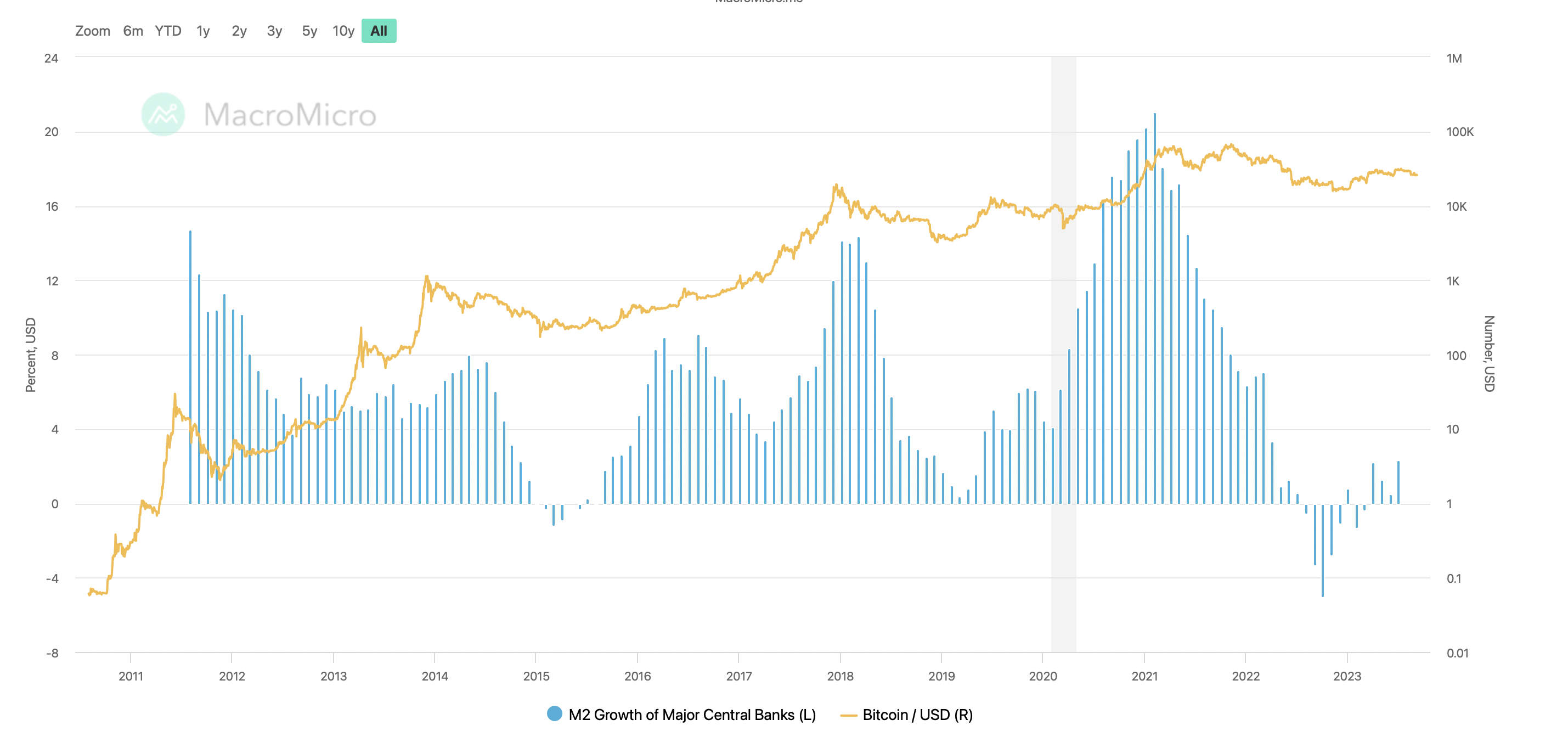- According to data tracked by MacroMicro, macro factors have likely played a significant role, particularly in the form of abundant fiat liquidity conditions.
- Bitcoin’s 56% gain since the beginning of 2023 signals a recovery from last year’s bear market depths, which is in line with the timing of previous price bottom points.
- The Federal Reserve and other major central banks have raised interest rates rapidly over the past 12-18 months to curb inflation, and the likelihood of further liquidity easing in the coming months appears low.
Bitcoin’s upcoming halving event, set to occur in April 2024, is hoped to initiate a significant rally, as it has been a notable bull catalyst in the past.
Bitcoin Halving May Not Be the Only Catalyst for Bulls

However, traders should consider that previous halvings didn’t necessarily single-handedly trigger bull runs. According to data tracked by MacroMicro, macro factors have likely played a significant role, particularly in the form of abundant fiat liquidity conditions.
The halving represents a programmed code in Bitcoin that reduces the rate of supply expansion by 50% every four years. The next halving will decrease the reward miners receive per block from 6.25 BTC to 3.125 BTC.
Previous halvings occurred in November 2012, July 2016, and May 2020, and Bitcoin reached new record levels with three-digit price rallies in the subsequent 12-18 months before entering distinct bearish trends.
These bear markets tended to bottom out approximately 15 to 16 months before the next halving. Bitcoin’s 56% gain since the beginning of 2023 signals a recovery from last year’s bear market depths, which is in line with the timing of previous price bottom points.
Don’t Ignore M2 Growth Rate
The magnitude of the expected rise driven by the upcoming halving will likely depend on the annual M2 money supply growth rates of major central banks – the U.S. Federal Reserve, the European Central Bank, the Bank of Japan, and the People’s Bank of China.
The combined M2 of these four major central banks represents the total value of their respective fiat currencies in circulation.
Previous post-halving bull runs have been characterized by a total M2 money supply growth rate of 6% or higher by the Fed, ECB, BOJ, and PBOC. Conversely, bear markets have coincided with a slowdown in money supply growth. This model supports the common argument that Bitcoin is a pure bet on fiat liquidity.
The total M2 money supply growth rate has turned positive this year but still remains below the 6% level. The Federal Reserve and other major central banks have raised interest rates rapidly over the past 12-18 months to curb inflation, and the likelihood of further liquidity easing in the coming months appears low.







